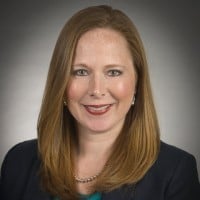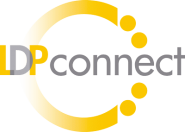How To “Right Size” Your Talent Development Program
How To “Right Size” Your Talent Development Program
Early talent program size is an important part of the equation for success. A “one size fits all” approach doesn’t take strategy or organizational culture into account.
A McKinsey & Company report said too many leadership development programs are built with the assumption that “the same group of skills or style of leadership is appropriate regardless of strategy, organizational culture or CEO mandate.”
What are your company’s short-term and long-term strategic goals? What are you trying to achieve and how would a new program achieve it without creating new pain points? How your organization structures its leadership development program will depend on how you answer that question. Also, the program’s stated goals must be ingrained in your company culture as opposed to a side effort.
What are the traits your organization values most in its leaders? Outline the proficiencies of each leadership position; your program will have to develop these qualities and skills intentionally.
Limit The Program Size (At Least Initially)
We asked Kimberly Martin, Director of Talent Mobility and Pipeline Programs for Highmark Health, about the right approach for organizations wondering how big their program should be.

Kimberly Martin
It’s important to size your program in a way that gives you a consistent stream of high potential talent into critical leadership roles. Factors to consider include the number of employees in your division, internal promotion rates and more.
“I suggest starting small if you are starting a new program,” Kimberly says. “For example, Highmark Health is starting a new sales program this year and we are hiring two candidates. For our more mature programs, we are hiring 12-20 per year.”
Turnover rate is another factor to consider, but not on its own.
“Be careful that you’re not using the rotational program as a way to feed turnover in a particular area,” she advises. “If you do this, you risk making the program too big and overstuffing the pipeline at the front end, with nowhere for them to go.”
A smaller program as a few benefits. For one, it keeps the participants in demand internally. After all, they’re part of an elite group, right?
“Everyone wants these people in their organization and you never have problems placing them in-program or at graduation from the program,” Kimberly says.
What about recruiting into the program? Smaller programs can see recruiting benefits. High potentiation students are looking at a place where they can make an impact and stand out. They don’t want to be one person in a sea of other program participants.
Not only are smaller programs easier to manage, but a smaller program also makes the program “special”. It gives program directors a chance to focus on the top candidates at the schools where recruiting is done.
High-Touch or Low-Touch?
How about program manager-to-participant ratios? Kimberly says anything from 20-60 participants per program manager works, depending on the support resources available to the program manager and the expectations set on high-touch versus low-touch.
Ty Paris is the Early Career Specialist at Owens Corning. She says your talent need—i.e., what gap/success pipeline you need to fill within the organization—should guide your choices as you build.
“Our development programs are structured by function to the bench of our leadership pipelines,” Ty explains. ”For example, our strategic marketing leadership program came to fruition due to our need for product managers and future marketing leadership succession needs. We felt that the organization was light on this talent and we saw more success filling these roles with employees developed from within.”
Program managers need to design programs in a way that makes intentional skill development possible. Start by leveraging data to forecast talent needs and anticipate workforce movement. Evaluate the availability of “real” roles for participants to be in or rotate into.
“I see many programs have participants as ‘an add’ on teams,” Ty says. She says this “greatly disables development” for the participant.
So whatever your program size, make sure the program is seen as more than a way to keep the back bench full of fresh talent.

Ty Paris
Your Program Is Only As Good As Its Leadership
What about leadership and governance? Participants need strong early career leaders heading the programs. This leadership will impact participants’ rate of growth, performance management, retention and much more.
As for program manager-to-participant ratio, Owens Corning does not have a specific target. However, in addition to program leaders and HR program leaders, their approach includes establishing a leadership or steering team.
“We break up the steering team into responsibilities – talent acquisitions, internship management, curriculum development, and performance management,” Ty says. Buy-in from company leadership can mean you’ll get the resources that you need.
“It is critical to a program’s success that companies have the available resources and ensuring resource capacity,” Ty says. “Managing a program is not a light lift.”
Once your program is functioning and—if needed—scaling up, professional development and benchmarking will continue to be important elements of continual improvement. Joining LDP Connect can make the connections you need to find these benchmarking opportunities. Many of our members have received a wealth of knowledge from this community.
Additionally, sending at least one or two people from your team to attend the LDP Summit. This year’s conference in Minneapolis will feature case study presentations, small group brainstorming sessions, and benchmarking data on leadership development practices.



